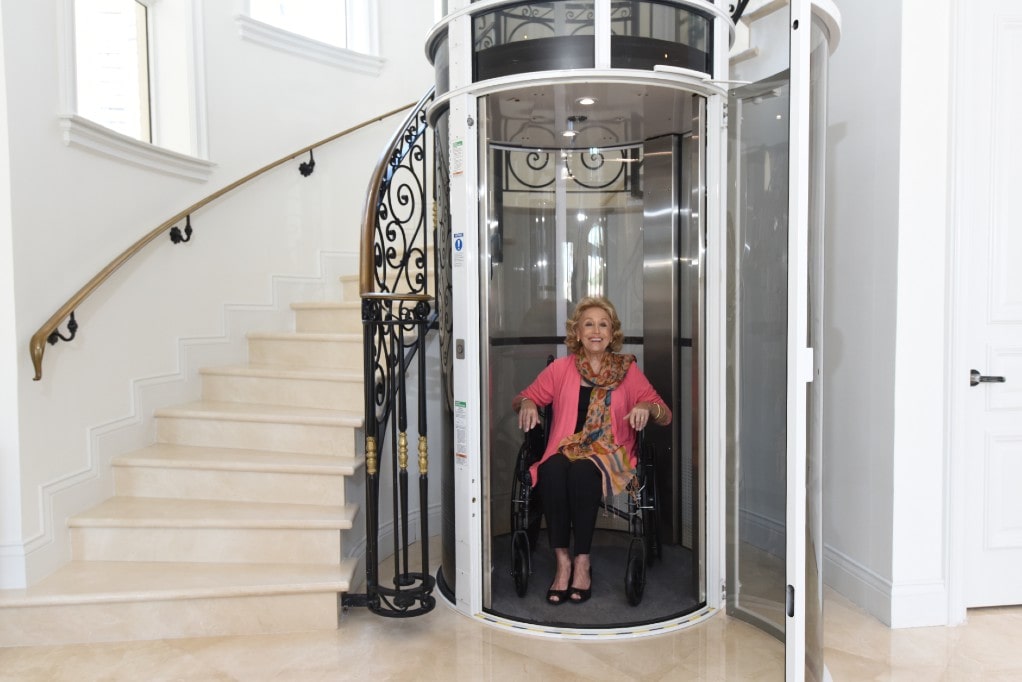London Lift Company: Giving Comprehensive Lift Solutions Across the Resources
London Lift Company: Giving Comprehensive Lift Solutions Across the Resources
Blog Article
Digging Into the Globe of Elevators: Common Concerns Faced by Different Lift Mechanisms
As we browse with the upright transportation systems of modern buildings, elevators stand out as an indispensable element of our day-to-day lives. Nevertheless, behind their smooth operation exists a world of detailed systems that can sometimes experience challenges. From hydraulic lifts to grip systems and machine-room-less styles, each lift kind includes its set of typical problems. Recognizing these challenges is essential for ensuring the smooth functioning of these essential systems. Let's explore the intricacies that underlie the operation of elevators and the potential issues that can arise, clarifying the intricate web of lift devices.
Hydraulic Lifts
Hydraulic lifts, frequently liked for low-rise buildings, use fluid pressure to control the movement of the elevator automobile (lift repair companies). This device includes a hydraulic pump pressing oil into a cyndrical tube, causing the lift to relocate in the preferred direction. While hydraulic elevators are understood for their smooth and quiet procedure, they do include their very own set of typical issues
One widespread issue with hydraulic lifts is oil leakage. The seals in the hydraulic system can break over time, causing oil seepage. This not only produces a mess however can likewise influence the lift's performance if left unaddressed. In addition, concerns with the control system, such as damaged valves or a malfunctioning pump, can cause disturbances in the elevator's motion.
Routine maintenance and timely repairs are important to make sure the smooth performance of hydraulic lifts. By addressing these usual concerns proactively, building proprietors can minimize downtime and make sure the safety and security and effectiveness of their vertical transportation system.
Grip Lifts
When considering upright transport systems in structures, one more common type besides hydraulic lifts is the traction lift. Grip lifts operate utilizing a system of ropes and weights that move the elevator auto by grasping onto the hoist ropes. This system permits smoother and much faster vertical transport contrasted to hydraulic systems.
Among the typical concerns dealt with by traction lifts is rope wear. The constant movement of the ropes within the grip system can result in tear and use over time, possibly causing the elevator to malfunction or end up being risky for usage. Normal inspections and upkeep of the ropes are crucial to make sure the lift's proper functioning and security.
One more issue that traction lifts might encounter is connected to the control system. Troubles with the control system can result in problems such as irregular motion, delays in reaction times, or even full closures. Normal testing and upkeep of the control system are essential to avoid such issues and make certain the elevator's dependability.
Machine-Room-Less (MRL) Lifts

One of the key parts of MRL elevators is try this the portable gearless traction maker that is installed within the hoistway. This device efficiently drives the lift automobile without the need for large tools found in traditional traction lifts. In addition, MRL lifts typically make use of a counterweight system to stabilize the vehicle, more boosting their power performance.
Despite their benefits, MRL lifts might encounter obstacles connected to upkeep and repair work because of the confined room for devices installment. Availability for servicing components within the shaft can be limited, needing specialized training for professionals. Correct upkeep routines and routine assessments are essential to make certain the continued smooth procedure of MRL elevators.
Overloading and Weight Limitation Issues
Straining and weight limitation problems are important worries in elevator operations. Lift producers layout raises with particular weight abilities to make certain traveler security and tools long life.
When elevators are overloaded, it puts too much pressure on the motor, cords, and other components, potentially triggering malfunctions or malfunctions. Security devices such as sensing units and overload sensors are in place to stop elevators from moving if they spot excess weight. Furthermore, surpassing weight limits can cause raised energy usage and damage on the elevator system.
To minimize overloading issues, constructing managers ought to plainly display weight restrictions in elevators and educate owners on the importance of sticking to these restrictions - lift repair companies. Normal maintenance checks by qualified service technicians can likewise aid ensure that lifts are operating within safe weight parameters. By dealing with overloading and weight limit problems proactively, building proprietors can improve elevator safety and security and performance
Electric System Failures
Exceeding weight restrictions in elevators can not only lead to mechanical concerns yet also possibly contribute to electrical system failings within the his explanation lift facilities. Electrical system failures are an important concern in elevator operation, as they can cause unexpected closures, breakdowns, or even safety and security threats.
Moreover, power surges or fluctuations in the electric supply can additionally interrupt the elevator's procedure, influencing its efficiency and safety. These electrical disturbances can damage sensitive elevator components such as control board, circuit boards, or sensors, bring about system failures. Regular upkeep and assessments are crucial to recognize and attend to potential electrical issues promptly, making certain the secure and reliable get more procedure of lift systems. By adhering to weight limits and performing routine electrical system checks, building owners can minimize the risk of electric failures in elevators.
Conclusion

Hydraulic elevators, usually chosen for low-rise structures, utilize fluid pressure to manage the activity of the elevator vehicle.When taking into consideration vertical transport systems in structures, another common kind apart from hydraulic elevators is the grip elevator. Grip elevators run making use of a system of ropes and weights that relocate the lift cars and truck by gripping onto the hoist ropes. Unlike traditional lifts that call for a separate machine room to house the tools, MRL elevators incorporate most of the parts within the shaft, removing the requirement for a devoted maker room.In conclusion, elevators face typical issues such as hydraulic malfunctions, grip system failures, and electrical system problems.
Report this page